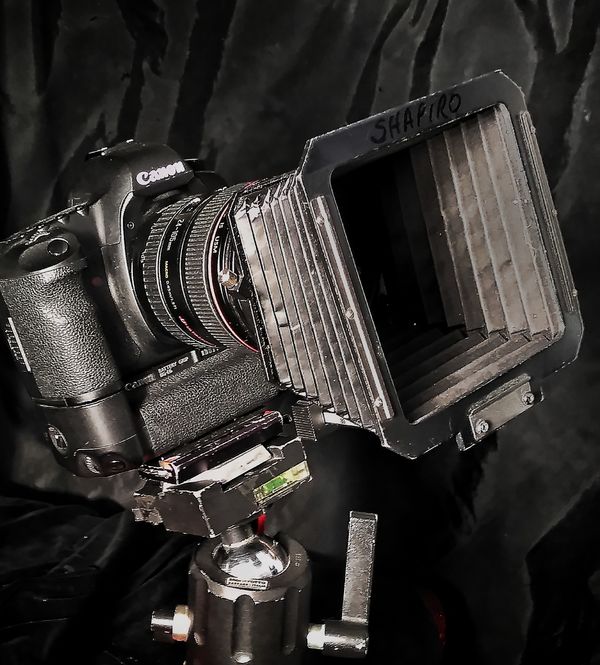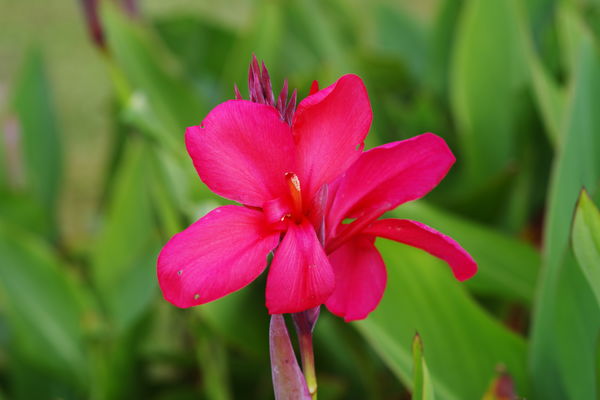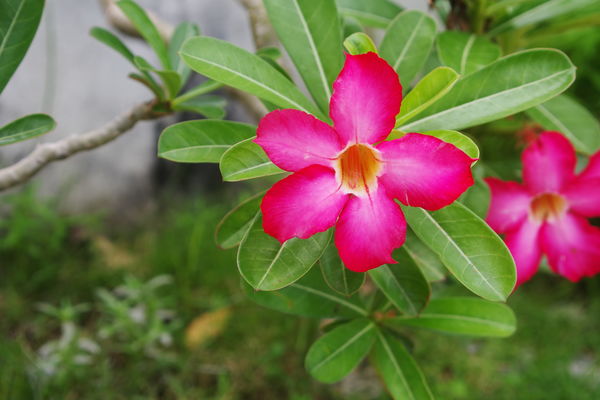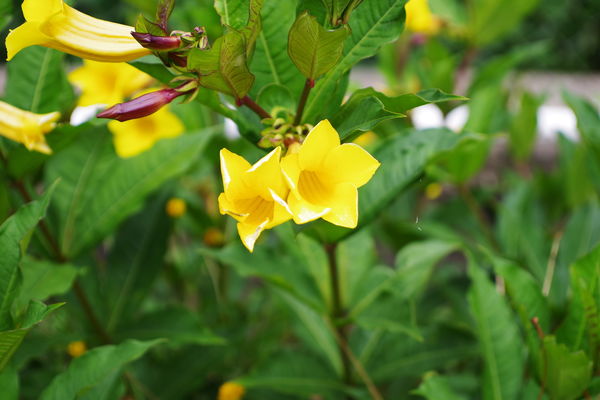Abberation of Red and Yellow Colors
Feb 4, 2018 09:29:48 #
I use 3 different Pentax cameras- K-3, K-1 and 645Z. No matter what mode I use (landscape, natural, portrait, vibrant) and adjusting the colors, contrast, etc., I get unsightly reflections in daylight on red and yellow flowers. My eyes do not see this, even in the viewfinder or live view. A polarizer does not help nor does adjusting ISO. Now, shooting the same flowers in shade does not produce this undesirable effect.
Any suggestion how to eliminate it?
Any suggestion how to eliminate it?
Feb 4, 2018 10:16:06 #
We need an example to see what you are referring to. Make the image downloadable by checking "Store original".
Feb 4, 2018 15:42:41 #
Without seeing the images (posting them would be helpful in troubleshooting the issue) and going by your description of the problem, it is likely that your problem is caused by FLARE, that is, some of the light (direct and reflected) striking the lens. In bright sunlight, this is more apt to occur. Sometimes an ordinary lens shade is not deep enough to prevent this condition. Flare can also cause a loss of contrast but that is difficult to asses without seeing the affected images.
If you do lots of this kind of work in bright conditions you may wish to obtain a bellows or compendium typ of shade which can maximize the shading effect. You can rack out the shade until it begins to vignetted the images- you will need to observe the image with the lens stopped down at your working f'/stop) and the rack it back slightly to eliminate the vignette.
Before making an investment is a more expensive shade, try this experiment. Mout the came on a tripos, Shoot a flower or similar subject where the problem usually occurs. Bring along a piece of FLAT BLACK cardboard about 11x14 inches in size. Focus and compose the image and walk around to the front of the camera and carefully SHADE the lens, with the black cardboard) from any light that you observe to be striking it- make sure the cardboard (GOBO) is not in the field of view.
Other precautions- remove any filters that may be causing flare or any other interference.
Other controls in troubleshooting: If the problem occurs in all your lenses and bodies it is unlikely that the cause an aberration or defect in any one lens or a light leak or other malfunction in any of the bodies. Make sure everything is CLEAN- the lenses, any filters and the sensor.
Please see my next reply post for further information on the recommended kind of lens shade.
If you do lots of this kind of work in bright conditions you may wish to obtain a bellows or compendium typ of shade which can maximize the shading effect. You can rack out the shade until it begins to vignetted the images- you will need to observe the image with the lens stopped down at your working f'/stop) and the rack it back slightly to eliminate the vignette.
Before making an investment is a more expensive shade, try this experiment. Mout the came on a tripos, Shoot a flower or similar subject where the problem usually occurs. Bring along a piece of FLAT BLACK cardboard about 11x14 inches in size. Focus and compose the image and walk around to the front of the camera and carefully SHADE the lens, with the black cardboard) from any light that you observe to be striking it- make sure the cardboard (GOBO) is not in the field of view.
Other precautions- remove any filters that may be causing flare or any other interference.
Other controls in troubleshooting: If the problem occurs in all your lenses and bodies it is unlikely that the cause an aberration or defect in any one lens or a light leak or other malfunction in any of the bodies. Make sure everything is CLEAN- the lenses, any filters and the sensor.
Please see my next reply post for further information on the recommended kind of lens shade.
Feb 4, 2018 16:08:32 #
The bellows or compendium type of lens shad is an oftentimes overlooked accessory. Perhaps some consider it "old school". Even with the finest and most up to date lens designs, formulas and coatings and high quality filters, FLARE can sill badly effect the quality of your images.
Flare can be more of a prevalent issue in bright lighting, where there is directional light such as back or side lighting, or even in controlled studio condition where "kicker" or rin lightning is employed at angles of incidence exceeding 90 degrees to the camera subject axis. Flare can also be cause by light that is reflected from nearby objects where the angle of incidence is such that a goodly amount of light strikes the lens.
The bellows lens shade is designed to fine tune the degree of shading in theses situations. They are adjustable to accommodate various focal lengths and can be calibrated or marked with the extension required for various lenses.They are fitted to the lenses via adapter rings. Many of them are equipped with filter slots for fast insertion of of filters or diffusion accessories that are mounted in square or rectangular frames. Some also have channels at their front ends to accommodate vignettes and other special effects accessories.
In the attached image, I have deliberately placed my light at a angle that could easily bring on flare, so you can actually see the extent of the shading on the inner surface of the bellows.
Flare can be more of a prevalent issue in bright lighting, where there is directional light such as back or side lighting, or even in controlled studio condition where "kicker" or rin lightning is employed at angles of incidence exceeding 90 degrees to the camera subject axis. Flare can also be cause by light that is reflected from nearby objects where the angle of incidence is such that a goodly amount of light strikes the lens.
The bellows lens shade is designed to fine tune the degree of shading in theses situations. They are adjustable to accommodate various focal lengths and can be calibrated or marked with the extension required for various lenses.They are fitted to the lenses via adapter rings. Many of them are equipped with filter slots for fast insertion of of filters or diffusion accessories that are mounted in square or rectangular frames. Some also have channels at their front ends to accommodate vignettes and other special effects accessories.
In the attached image, I have deliberately placed my light at a angle that could easily bring on flare, so you can actually see the extent of the shading on the inner surface of the bellows.

Feb 4, 2018 16:32:28 #
Further comments:
In the original post the term lens "ABERRATION" is referenced as to the colors of the unwanted appearance of colorful interference of some kind. A chromatic aberration is a intrinsic deficiency of a lens to focus all colors properly on the same plane. Frankly, I am not sure how this aberration manifests itself on the resulting image- it could be frinfing or color banding or just a deficit in color accuracy or accurtance I am not sure if this would bring on spots, patches of color or unidentifiable reflections. In most contemporary lenses, many of the classic aberrations have been minimized, however,in some zooms, there has been reported instances of color fringing etc. at certain focal lengths and apertures. If, in fact, there is subnc an aberration or defect, there is no user serviceable or remedial solution except to restrict the use of that lens to more compatible lighting scenarios or send the lens in for diagnosis and repair if there is a damage or misaligned element or breakdown in the internal baffling or coatings of the mechanical parts.
Another observation: If the issue does not appear in the viewfinder but only in the final results, there could be an glitch somewhere in the processing, the software or the computer.I have never experience that personally but if the issue is not solved in the camera management, that is something to investigate.
Most of theses problems can eventually be solved by troubleshooting and the process of elimination.I usually star with technique and camera image management and problem further from the conclusions obtained at that level.
In the original post the term lens "ABERRATION" is referenced as to the colors of the unwanted appearance of colorful interference of some kind. A chromatic aberration is a intrinsic deficiency of a lens to focus all colors properly on the same plane. Frankly, I am not sure how this aberration manifests itself on the resulting image- it could be frinfing or color banding or just a deficit in color accuracy or accurtance I am not sure if this would bring on spots, patches of color or unidentifiable reflections. In most contemporary lenses, many of the classic aberrations have been minimized, however,in some zooms, there has been reported instances of color fringing etc. at certain focal lengths and apertures. If, in fact, there is subnc an aberration or defect, there is no user serviceable or remedial solution except to restrict the use of that lens to more compatible lighting scenarios or send the lens in for diagnosis and repair if there is a damage or misaligned element or breakdown in the internal baffling or coatings of the mechanical parts.
Another observation: If the issue does not appear in the viewfinder but only in the final results, there could be an glitch somewhere in the processing, the software or the computer.I have never experience that personally but if the issue is not solved in the camera management, that is something to investigate.
Most of theses problems can eventually be solved by troubleshooting and the process of elimination.I usually star with technique and camera image management and problem further from the conclusions obtained at that level.
Feb 4, 2018 18:08:42 #
I have photos to demonstrate what I refer to but do not see "store origional" to upload them too. Please tell me what to do!
Feb 4, 2018 19:31:40 #
bedouin wrote:
I have photos to demonstrate what I refer to but do not see "store origional" to upload them too. Please tell me what to do!
Just check the "store original" box and proceed with your postin of the image. That option will supply us with a high quality downloadable image to work with.
In the FORUM RULES section of the main section there are detailed instructions for posting images. If everything else is understood, just check off that box and you are good to go. If you forget to finalize the postog of the image by omitting one of the steps, a RED notice will appear. After you select the image, make sure you click "ATTACH IMAGE" and then click "UPDATE" and/or "SEND". You will see the image appearing with your text.
If for some reason the "store image" option is missing- just post without it- the image will probably be good enough to assess.
Feb 4, 2018 22:42:29 #
While we are waiting for the download, from the OP’s description of the problem, I have to wonder if there has been clipping of the red (and green?) channel or channels...(red and green >yellow). The fact that the same subjects in shade fail to exhibit the same phenomenon may suggest this as a possibility (?) Might check if reducing red and green luminance in pp overcomes the objectionable effect.
Thoughts?
Dave
Thoughts?
Dave
Feb 4, 2018 22:59:03 #
Dave-
Is that a problem that originates in the camera or the lens and is somewhat correctable in editing or is it a processing or software issue that requires correction as you suggested?
Is that a problem that originates in the camera or the lens and is somewhat correctable in editing or is it a processing or software issue that requires correction as you suggested?
Feb 4, 2018 23:54:46 #
Hi, E.L.
I.M.E. (in my experience) at the edge of highlight clipping the red channel is first to clip, yielding exaggeration of (particularly) floral reds. the brightest reds loose all detail...bright and flat. It is an exposure problem especially prominent in imaging sunlit red flowers. I would be surprised were I the only one to have experienced the phenomenon. My suggestion of the possible contribution of clipping the green channel is pure hypothesis, given that in RGB, red and green are additive for yellow. since the OP mention yellows to be affected, it seemed logical to consider the possibility.
Of course, when all channels are clipped they appear the brightness of specular highlights.
I did not encounter the problem other than in direct sunlight. Hence, his observation that it did not occur in shade illumination, it seemed to fit.
I should mention, of course, that my experiences similar to what he described occcurred in the days when I was still shooting JPEGS. I have not experienced it since routinely shooting exclusively raw image data and assuring no highlight clipping. I suppose that is due to the versatility of most raw converters in providing some salvation from clipping of one or even two channels.
This is a situation that were I to enlarge on my suggestion, I would be exceeding my knowledge of what is actually going on.
I am looking forward to the download images.
I am also curious if others have experienced the same phenomenon.
Dave
I.M.E. (in my experience) at the edge of highlight clipping the red channel is first to clip, yielding exaggeration of (particularly) floral reds. the brightest reds loose all detail...bright and flat. It is an exposure problem especially prominent in imaging sunlit red flowers. I would be surprised were I the only one to have experienced the phenomenon. My suggestion of the possible contribution of clipping the green channel is pure hypothesis, given that in RGB, red and green are additive for yellow. since the OP mention yellows to be affected, it seemed logical to consider the possibility.
Of course, when all channels are clipped they appear the brightness of specular highlights.
I did not encounter the problem other than in direct sunlight. Hence, his observation that it did not occur in shade illumination, it seemed to fit.
I should mention, of course, that my experiences similar to what he described occcurred in the days when I was still shooting JPEGS. I have not experienced it since routinely shooting exclusively raw image data and assuring no highlight clipping. I suppose that is due to the versatility of most raw converters in providing some salvation from clipping of one or even two channels.
This is a situation that were I to enlarge on my suggestion, I would be exceeding my knowledge of what is actually going on.
I am looking forward to the download images.
I am also curious if others have experienced the same phenomenon.
Dave
Feb 5, 2018 00:26:12 #
Thanks Dave!
I have never experienced that particular issue in that I too routinely shoot RAW and when I do the occasional Jpeg, I usually watch my exposure.
I suppose I interpreted the OP's problem as some kind of patch of color or stain-like defect in his images rather than a blown out or overly saturated color.
I am anxiously awaiting for the image!
I have never experienced that particular issue in that I too routinely shoot RAW and when I do the occasional Jpeg, I usually watch my exposure.
I suppose I interpreted the OP's problem as some kind of patch of color or stain-like defect in his images rather than a blown out or overly saturated color.
I am anxiously awaiting for the image!
Feb 5, 2018 10:18:46 #
I finally worked out this convoluted process of uploading. These areas of color fringing cannot be corrected except to a minor degree in editing. These 3 shots were with a different lens and a different camera (all Pentax-K-3, K-1 and 645Z). Any suggestions as to how to eliminate this pre-processing will be appreciated.
Feb 5, 2018 10:39:58 #
Hi, bedouin,
I am not perceiving the effect you describe in the yellow flowers (nor in the greens that I had thought might have also been involved) but certainly do in the magenta flowers.
I’m not seeing the shadows I would expect in a sunlit subject...???
To my eye the red channel component of the magenta is too strongly saturated (the”S” of HSL). That is based on the assumption that the edges of the affected petals may be naturally closer to red than is the magenta in the more axial/central regions of the petals. Whether this is related to camera settings or to display settings, I’d not hazard a guess. I acknowledge that this suggestion would not account for the reported difference between direct sunlight and shade illumination, so I still wonder if red channel clipping in the sunlit images might be playing a role.
Wish I could be more specific, but I’m at the ragged edge of my knowledge and experience in this situation.
One last point; I see nothing to suggest that this has anything to do with classical chromatic aberration.
Dave
I am not perceiving the effect you describe in the yellow flowers (nor in the greens that I had thought might have also been involved) but certainly do in the magenta flowers.
I’m not seeing the shadows I would expect in a sunlit subject...???
To my eye the red channel component of the magenta is too strongly saturated (the”S” of HSL). That is based on the assumption that the edges of the affected petals may be naturally closer to red than is the magenta in the more axial/central regions of the petals. Whether this is related to camera settings or to display settings, I’d not hazard a guess. I acknowledge that this suggestion would not account for the reported difference between direct sunlight and shade illumination, so I still wonder if red channel clipping in the sunlit images might be playing a role.
Wish I could be more specific, but I’m at the ragged edge of my knowledge and experience in this situation.
One last point; I see nothing to suggest that this has anything to do with classical chromatic aberration.
Dave
Feb 5, 2018 11:23:55 #
It ain't flare or optical deficit!
A quick smart phone app edit de- saturated the magenta exaggerated chroma.
Dave has it right!
A quick smart phone app edit de- saturated the magenta exaggerated chroma.
Dave has it right!

Feb 5, 2018 13:03:28 #
Additional information. It has been pointed out by a consciousness member who took time to examine the exif data on the images in question, that the files are significantly OVEREXPOSED and this can be the cause or the exacerbating factor in this issue. I advise the OP to do some experimentation in similar lighting situation with similar subjects and bracket the exposures. The overexposure may be caused by the metering system in the camera that may be making integrated or average readings rather that spot readings or the reading is being extracted for the wrong zone. If it is reading in in a shadow area, it can overexpose the highlights and cause the resulting "blown-out" colors.
Check the camera's manual to see if there is an adjustment as to the "spot" reading of the exposure system. Taking a reading off of an 18% gray card and then locking in the reading may help. In bracketing, make some addition exposure in 1/2 stopincramants, in this case especially toward the decrease in exposure, may lead to some significant improvement.
Check the camera's manual to see if there is an adjustment as to the "spot" reading of the exposure system. Taking a reading off of an 18% gray card and then locking in the reading may help. In bracketing, make some addition exposure in 1/2 stopincramants, in this case especially toward the decrease in exposure, may lead to some significant improvement.
If you want to reply, then register here. Registration is free and your account is created instantly, so you can post right away.






